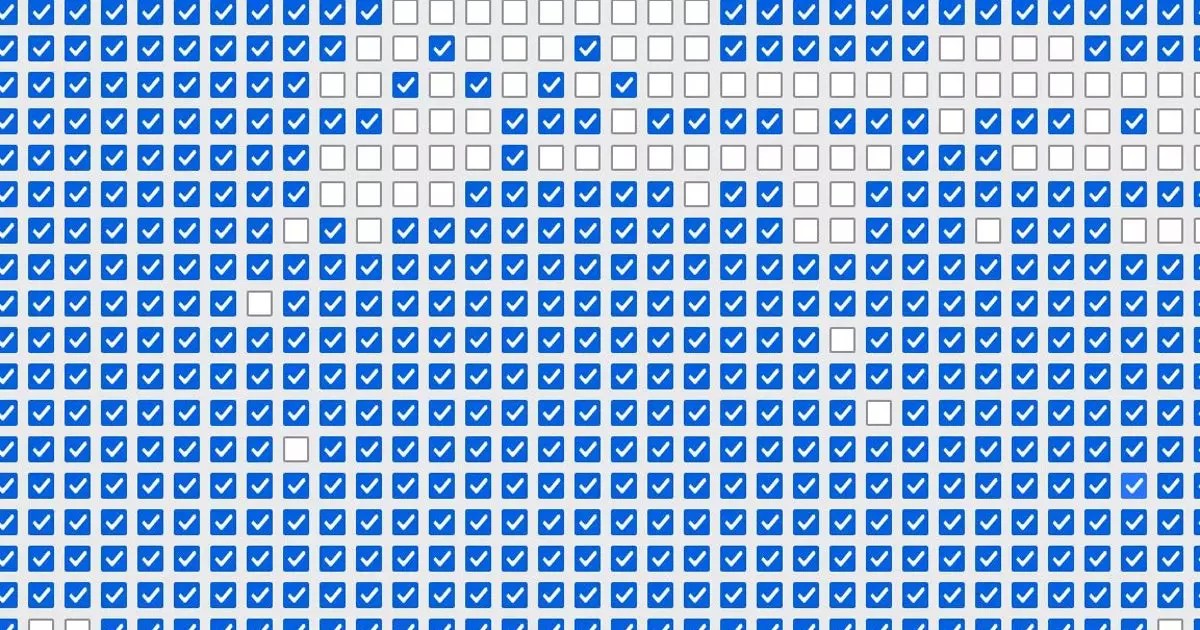In the ever-evolving landscape of the internet, platforms that promote creativity and collaboration often leave a significant mark. One such platform, created by Nolen Royalty, was the intriguing website known as “One Million Checkboxes.” Launched in June, this site quickly garnered attention as users flocked to interact with its one million individual checkboxes. The web experience was designed not just as a simple game; it became a cultural phenomenon where users could check or uncheck boxes, fostering both collaboration and competition. The surge of engagement sparked a rich tapestry of digital interactions and unintended chaos, reshaping how we perceive collective online participation.
The allure of One Million Checkboxes drew in a staggering audience—over 500,000 visitors within just a few days. In two short weeks, players collectively checked an astounding 650 million boxes. However, what at first seemed like a mere pastime soon revealed itself to be a complex battleground where participants were not only competing to fill boxes but also deciphering hidden messages and encoding secret communications. Amidst all this activity, the goal was far more nuanced than simply checking boxes; it transformed into a quest for dominance and creativity, exemplifying the depth of engagement that can arise in digital spaces.
The Technical Challenges
Nolen faced considerable challenges in maintaining the website’s functionality given the unexpectedly high volume of traffic. Many websites break under such stress, but Royalty’s quick thinking and adaptability allowed him to reprogram the backend system on the fly. He opted to “dump the database in ASCII,” an unusual choice that would typically lead to utter confusion. Instead, this maneuver inadvertently unveiled hidden messages encoded by users, showing that some participants had ingeniously utilized binary code to communicate through the checkboxes. The very simplicity of the checkboxes drew out complex interactions, reminding us how basic platforms can lead to sophisticated user-generated content.
As Nolen sifted through the resulting ASCII data, he discovered unexpected URLs. One in particular, referring to a Discord channel called “Checking Boxes,” sent him into a panic, fearing a security breach. However, it turned out to be a hub where players had congregated to strategize their actions on the site. Through alliances and teamwork, users developed bots to maintain their messages amid the frenzy of checking boxes, ultimately revealing the tremendous potential for community-driven narratives even in a seemingly simple concept.
Upon reviewing this Discord community, it became evident that these young participants were leveraging digital communication in a sophisticated manner. What started as a casual interaction quickly developed into a community of like-minded individuals, demonstrating that the digital realm can foster healthy collaboration. Nolen’s involvement in the Discord—a surprise appearance that ignited excitement—showcases how creators can engage with their user base meaningfully. The platform was not merely about interaction; it was about building social bonds and a shared sense of accomplishment that transcended individual actions.
Creative Misconduct: An Unexpected Twist
Among the many creative endeavors that arose during the two-week span, users generated memes, logos, and even an animated rendition of Rick Astley’s iconic “Never Gonna Give You Up” in a playful rickroll. These digital expressions, seen as subversive acts, contributed to a tapestry of creativity reminiscent of a nostalgic internet culture. Despite some criticism regarding the use of bots—which often provoke disdain among traditional gamers—the indomitable spirit of the players displayed a delightful ingenuity that highlighted the very essence of community creativity.
Conclusion: A Nostalgic Reflection
As One Million Checkboxes reached its conclusion, the impact of this digital playground lingered. Nolen’s reflections reveal that the exercise resonated deeply, evoking childhood memories of playful experiments online. He captured a broader truth about the internet: creativity, no matter how trivial it may seem, can be a powerful force for connection, engagement, and even learning for the next generation. The encouragement of artists and mischief-makers today empowers them to contribute to the future of gaming and digital interaction. “The mischief makers of today will make the games of tomorrow,” Royalty correctly notes, reinforcing a vital perspective in our rapidly transitioning digital landscape. In a world increasingly defined by complexity, platforms like One Million Checkboxes remind us that the value of play and collaboration remains timeless.


Leave a Reply